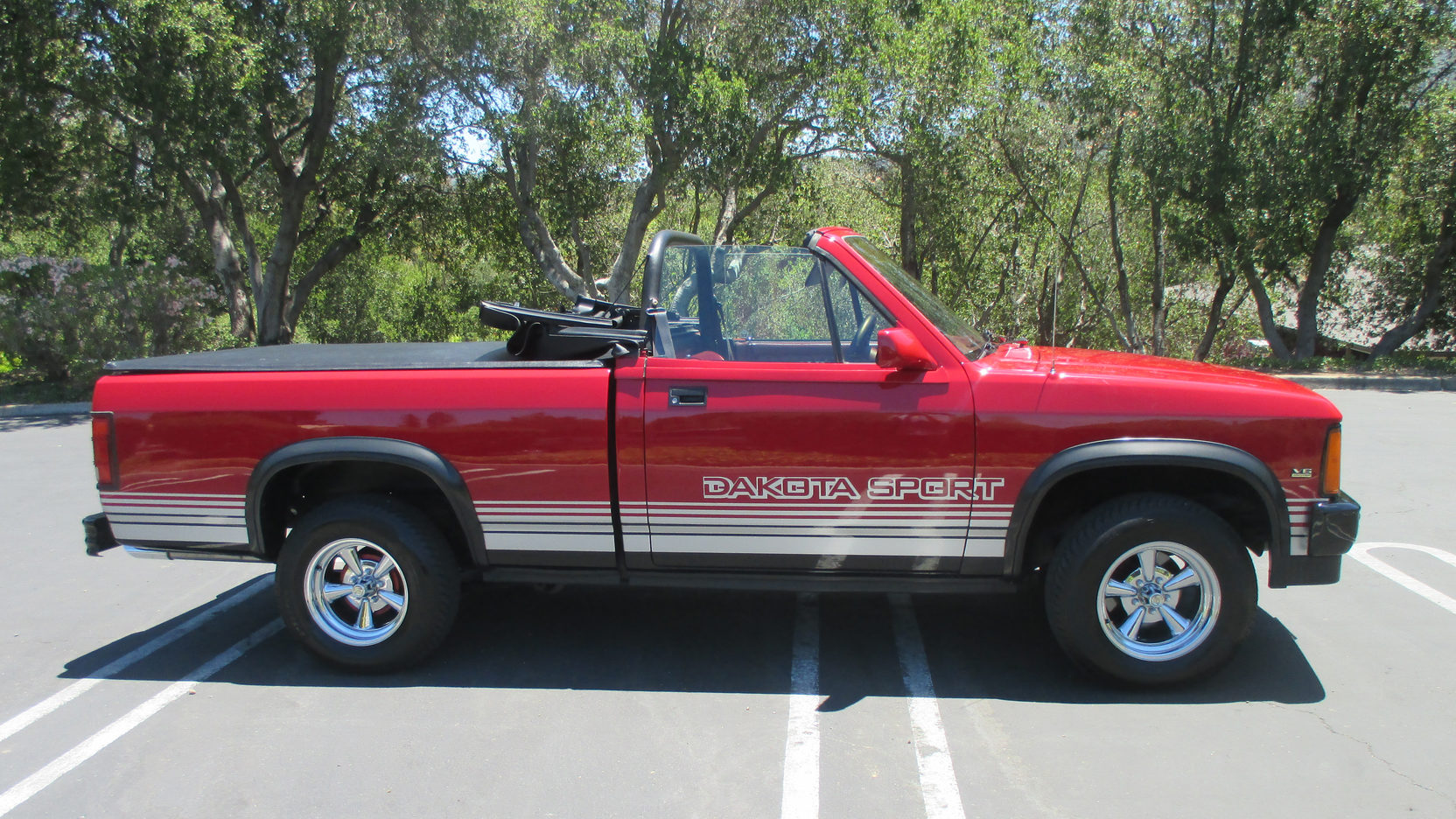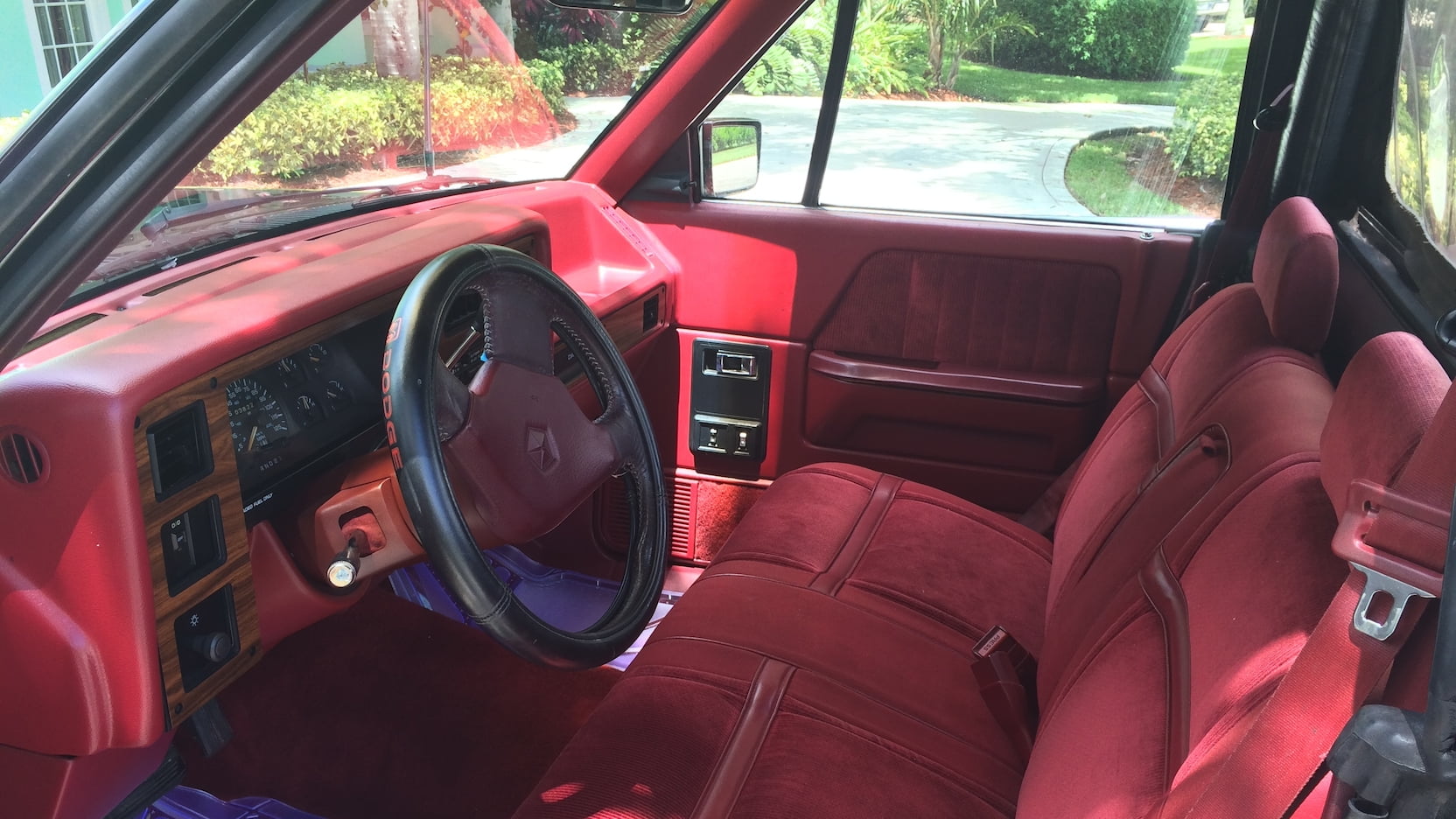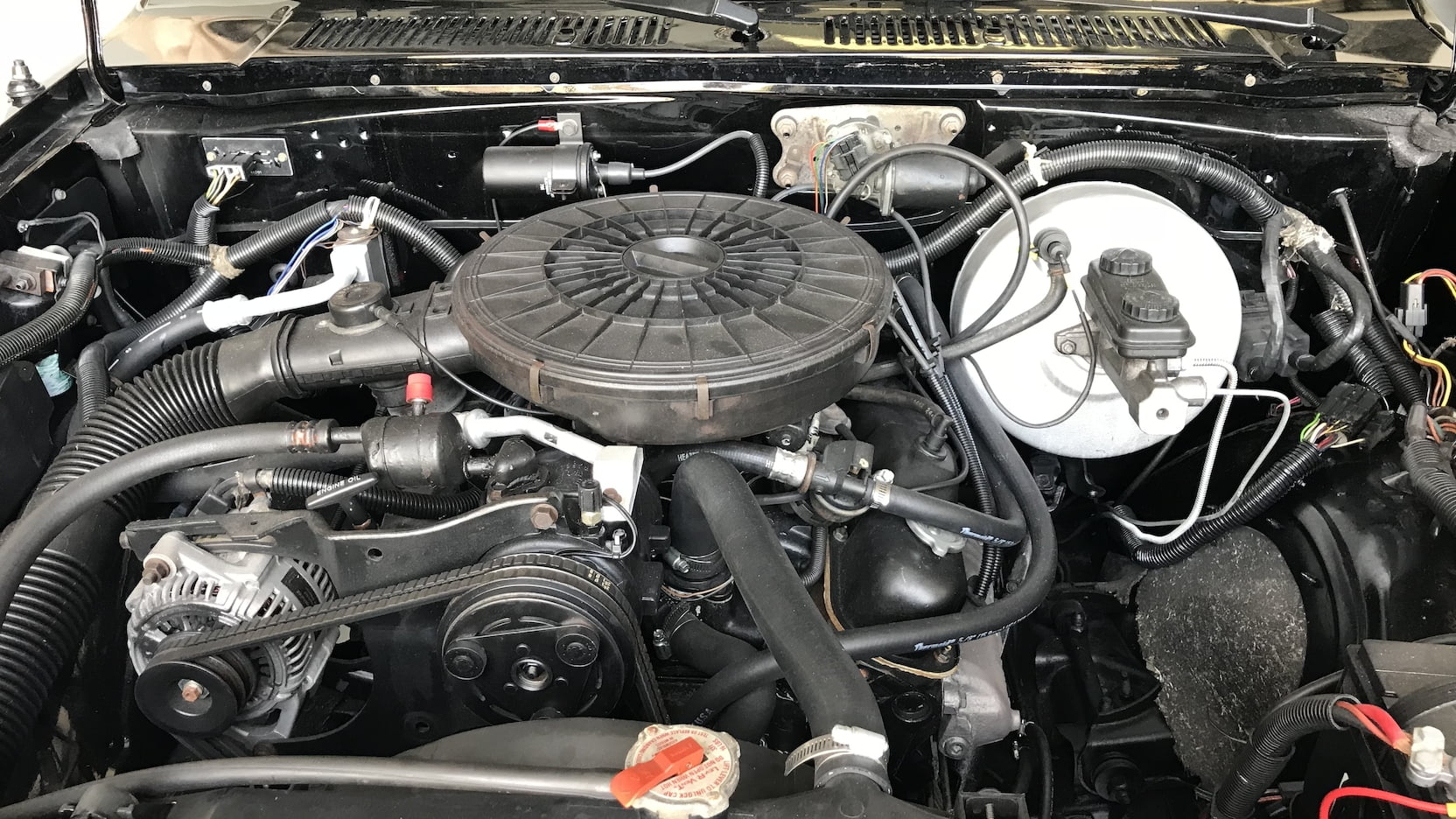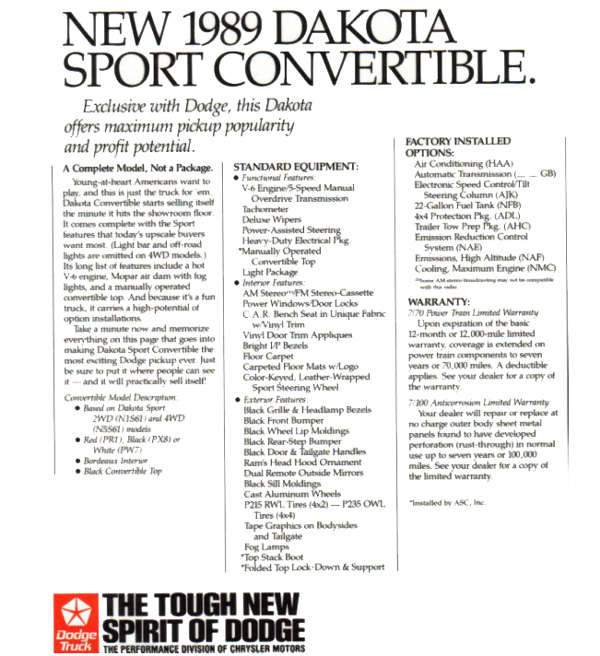Media | Articles
The 1989–91 Dodge Dakota Sport convertible was the drop-top no one wanted
Convertible pickup trucks are the answer to a question that the general car-buying public has never asked. Technically the Ford Model A pickups had a removable roof, but once that pioneering model left the scene it took more than a half century before an automaker decided to test the waters with a vehicle that helps you get a sunburn while also living in perpetual fear of being permanently injured by sliding cargo.
The bridge between the working world and the fantasy of fun and sun eventually took the form of the 1989–91 Dodge Dakota Sport convertible. Built in partnership with American Sunroof Corporation (ASC), the topless Dakota was a true oddball from Detroit’s favorite mod shop. Never afraid to make the most unusual Big Three marketing fever dreams into real steel, ASC took a chainsaw to the Dodge and for three years helped manufacture a vehicle that almost nobody wanted.
Pickup minus roof equals… profit?

The Dodge Dakota itself was a bit of an outlier on the pickup truck scene. Introduced in 1987 as a larger-than-compact alternative to the Ford Ranger and the Chevrolet S-10/GMC S-15 twins, the Dakota effectively invented the mid-size truck segment that continues on to this day. It also allowed buyers to haul a 4×8 slab of plywood or drywall without having to leave the tailgate open, which was a stark contrast to the more modest Blue Oval and Bowtie entries.
Marketplace
Buy and sell classics with confidence
Not only was the mighty Dak bigger than its contemporaries, but it was unique in offering a chest-thumping V-8 engine in the form of the limited-production, 1989-only Shelby Dakota—something no compact hauler could match at that time. Spreading that eight-cylinder out to the rest of the lineup was still a couple of years into the future, however, when Chrysler CFO Jerry York came up with the brainwave that would become the Dakota Sport convertible.
The Dakota wasn’t selling all that well, with an initial 100,000 units in 1987 dropping to just below 90,000 a few years later in 1989, which was less than half what General Motors was enjoying with its S-10. York’s idea to boost sales wasn’t adding more power or off-road toughness. No, Jerry went completely off script with the idea that what pickup buyers were truly looking for was a flimsy vinyl roof and the winking protective promise of a single-hoop roll bar.

Not many out there
When it first hit dealerships as a 1989 model, you could order the Dakota Sport convertible in either black, white, or red. The Sport designation gave you a standard 3.9-liter V-6 good for 125 horsepower, and transmission choices included a five-speed manual or four-speed automatic. If you wanted to go “full-weird,” then four-wheel drive could also be ordered; standard equipment included velour seats, power windows, and door locks, cruise control, fog lights, and anti-lock brakes on the rear axle (as well as unique graphics).
A scant 2842 adventurous souls took Dodge up on its top-down Dakota offer that year. For 1990, even with the addition of four-cylinder trucks and the color blue to the paint options, sales fell to just 909. Depending on who you believe, 1991 saw a final eight Dakota Sport convertibles built to fulfill the contract with ASC, before the axe fell hard on the truck’s floppy neck.
A fish without a bicycle
Why did the Dodge Dakota Sport convertible die in such a quick and ignominious fashion? It might have had something to do with the fact that the top wasn’t all that capable when it came to keeping driver and passengers dry, or perhaps the pile of vinyl in the cargo bed with the top down wasn’t appealing to the eye. Or maybe it’s the fact that the convertible off-road market was saturated by the also-Chrysler Jeep Wrangler, and couldn’t absorb a few thousand extra open-air ruffians built on the whim of a man who just a few years later was passed over in the search for Chrysler’s next CEO.
At best, a convertible pickup is a novelty, and at worst, it’s dangerous in a way that few trucks had ever been before. Such was the lesson of the Dakota ’vert that it took more than a decade before anyone else tried to once again educate Americans about the wonders of top-down hauling—and that vehicle, the Chevrolet SSR, proved similarly lacking in longevity. (It did have a mean Corvette V-8, though.)
Still, if you’re looking to sample one of the most unique pickups ever offered, it won’t cost you more than $10,000 for Dodge Dakota Sport convertible in good driving condition. Chances are, if you can find one you’ll actually pay much, much less. That’s not a lot of cash to own one of the rarest Mopars on the planet. Just make sure to keep a poncho in the glove box.









i would like to buy one of the dodge decota converts 4×4
Looking for a dodgedakotaconvertible
I’ve got one. Red. In Ohio.
I have 2 in Pennsylvania
Wondering why a 1989 Dakota would have a “turbo” chrome insignia just under the Dakota tag on the driver’s side front fender???